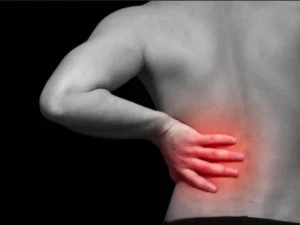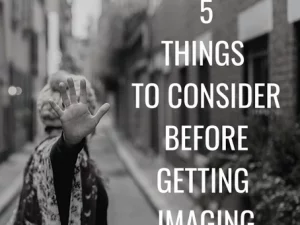Twenty percent of people each year experience low back pain, and 80% have a significant episode of pain over their lifetime. Those are really bad odds. That’s why maintaining the health of your spine is so important.
How can you help keep your spine in tip top shape?
Step 1 – Stop Focusing on the things that Don’t Help
Since so many people struggle with back pain, many theories and remedies have been generated over the years. That creates a lot of misinformation and noise; much of this advice is outdated, inaccurate, or unsuccessful.
Some common ones:
Poor posture is the reason for your pain
Getting an MRIs or an X-rays will tell you why you have pain
Don’t sit all day, standing desk are better
Poor posture or bad alignment is often deemed as a cause of low back pain.
Here is the truth.

Forty one studies tried to connect low back pain to posture from 1990 to 2018.
A review of all forty one of these studies was conducted and during that review they could not find a consensus for “poor” postures causing low back pain.
Posture being the cause of pain has been tried, the data doesn’t support it, its outdated.
We can not often see your pain on an MRI.
This is a controversial topic.
Imaging (X-ray, MRI) is regularly the first thing a back pain patient is sent to.
You can read HERE on things that you should consider before you get imaging.
The short explanation about imaging is, the exact same things are seen in people with pain as people without pain.
A study reviewed thirty one Clinical Practice Guidelines (CPG’s). (These are the guidelines outlined by professional organizations for chiropractors, surgeons, physicians. They exist to help professionals give the best care to those in their care.)
The overwhelming recommendation is that imaging should only be used after conservative care has not proceeded as expected.
This is because you cannot see a reason for your pain. Unless there is significant trauma, imaging may give the wrong narrative. Pain is not directly correlated to the body’s structure. Decisions should not be made off imaging results alone.
It’s important to note that this recommendation is the same for every portion of the body so long as there is no significant trauma involved.
Getting answers from imaging is inaccurate.
Standing desks can help alleviate the pain from sitting.
This is just one, of many, example of a fix that over promises results and is often unsuccessful.
Multiple studies from 1996 to 2016 documented the effects of changing extended sitting at work to extended standing. A review of these studies found no significant change in spine comfort after the switch was made.
Cancel out the noise, bad posture, imaging findings, sitting… and move on to step 2.
Step 2 – Get Up and Walk!

Break up sitting every 15 minutes with just 20 seconds, yup seconds, of movement.
This small amount of movement found a significant reduction in disc compression over the course of the day.
Then walk!
A review of five studies comparing back specific exercises to just walking showed that walking for 10-20 minutes had similar effects in relief of low back pain.
Already moving all day? Awesome, let’s move to the next step!
Step 3 – Understand there are no BAD movements
Far too often people are told what not to do with their spine.
Don’t bend, don’t extend, don’t twist, and definitely don’t bend and twist!
Well, here is reality.
The thoracic and lumbar spine have twelve separate and distinct bone segments, leading to 14 joints. Its similar to the hand with all it’s bones and joints.
When lifting a heavy object you want a firm grip and for your fingers not to move, often closed around it tightly with a fist. This is the same as the spine contracting to keep it straight under heavy weights.
In contrast, typing with a fist is quite difficult. Much like putting on shoes is difficult with a completely straight spine.
There are no bad movements, just bad movements within context.
One of the most important things we teach our patients is how to move their spine again.
To bend, extend, twist, tilt, etc.
Because retraining these movements has been well associated with much more pain relief than any amount of stretching you can do.
These joints were designed to move.
Imagine how sore your hand would be if you held a closed fist all day.
It’s very healthy for your spine to move!
Here’s an easy way to get started:
Step 4 – Add Lifting
Thirty individuals who had experienced three or more months of low back pain were taught how to properly deadlift (with a neutral spine). They then performed them three days a week with resistance training.
The result?
ALL of them got better.
It’s important to understand all they did was warm up and then perform deadlifts.
Imagine combining this with step 2 and 3 controlling the spine and then moving throughout the day?!

Step 5 – What To Do When Pain Happens
First and foremost it is crucial to understand two very important things about pain.
One, it is not directly related to tissue damage, this is seen not only in the MRI findings we were talking about earlier but in a situation you may be familiar with.
Ever found dried blood on yourself from a cut you didn’t know you had?
Tissue damage occurred, no pain.
Two, pain is an alarm signal, much like a check engine light coming on.
You don’t want to ignore it, you want to respond to it.
Covering it up is only going to make the situation worse down the road.
This is a complex topic again so we have more for you to read about it HERE.
Pain is very complicated but actually necessary and you need to listen to it.
You can overcome it but you’ll need a guide who is going to treat the whole YOU.
At Gray Duck Physical Therapy we always take the time to know you. The whole you, not just the sliver of you that is your pain right now. You’re so much more than that!
We specialize in helping motivated individuals get back to the sports and activities they love without taking time off or undergoing invasive irreversible treatments.
Our patients are Real People who have Real Pain. Who are willing to put in Real Work to get Real Results.
Click HERE to start your journey to an active life free of pain.
🚫The content in this is NOT medical or health advice and is intended for educational and entertainment purposes only. See a healthcare professional if you have any questions about your individual healthcare needs.🚫
References
- Billy GG, Lemieux SK, Chow MX. Changes in lumbar disk morphology associated with prolonged sitting assessed by magnetic resonance imaging. PM R. 2014;6(9):790-795.
- Cuff A, Parton S, Tyer R, Dikomitis L, Foster N, Littlewood C. Guidelines for the use of diagnostic imaging in musculoskeletal pain conditions affecting the lower back, knee and shoulder: A scoping review. Musculoskeletal Care. 2020 Aug 4
- Park KN, Kwon OY, Yi CH, et al. Effects of Motor Control Exercise Vs Muscle Stretching Exercise on Reducing Compensatory Lumbopelvic Motions and Low Back Pain: A Randomized Trial. J Manipulative Physiol Ther. 2016;39(8):576-585
- Swain CTV, Pan F, Owen PJ, Schmidt H, Belavy DL. No consensus on causality of spine postures or physical exposure and low back pain: A systematic review of systematic reviews. J Biomech. 2020 Mar 26;102:109312.
- Welch N, Moran K, Antony J, et al. The effects of a free-weight-based resistance training intervention on pain, squat biomechanics and MRI-defined lumbar fat infiltration and functional cross-sectional area in those with chronic low back. BMJ Open Sport Exerc Med. 2015;1(1):e000050. Published 2015 Nov 9.



